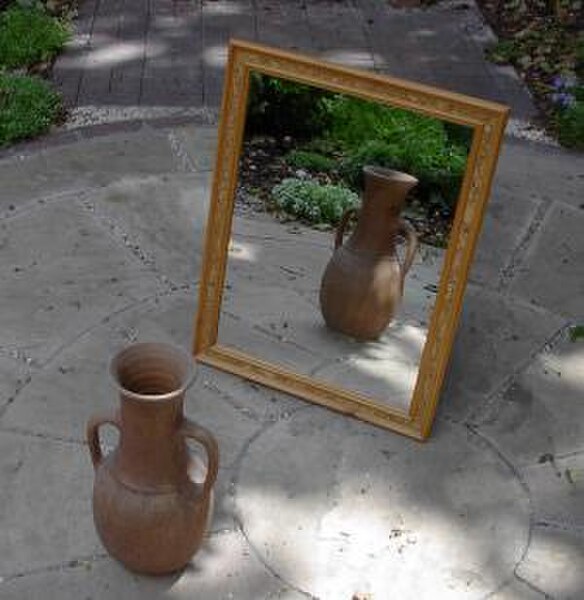A parabolic reflector is a reflective surface used to collect or project energy such as light, sound, or radio waves. Its shape is part of a circular paraboloid, that is, the surface generated by a parabola revolving around its axis. The parabolic reflector transforms an incoming plane wave travelling along the axis into a spherical wave converging toward the focus. Conversely, a spherical wave generated by a point source placed in the focus is reflected into a plane wave propagating as a collimated beam along the axis.
One of the world's largest solar parabolic dishes at the Ben-Gurion National Solar Energy Center in Israel
Off-axis satellite dish
Antennas of the Atacama Large Millimeter Array on the Chajnantor Plateau
Lighting the Olympic Flame with a parabolic reflector
A mirror, also known as a looking glass, is an object that reflects an image. Light that bounces off a mirror will show an image of whatever is in front of it, when focused through the lens of the eye or a camera. Mirrors reverse the direction of the image in an equal yet opposite angle from which the light shines upon it. This allows the viewer to see themselves or objects behind them, or even objects that are at an angle from them but out of their field of view, such as around a corner. Natural mirrors have existed since prehistoric times, such as the surface of water, but people have been manufacturing mirrors out of a variety of materials for thousands of years, like stone, metals, and glass. In modern mirrors, metals like silver or aluminium are often used due to their high reflectivity, applied as a thin coating on glass because of its naturally smooth and very hard surface.
A mirror reflecting the image of a vase
A first-surface mirror coated with aluminium and enhanced with dielectric coatings. The angle of the incident light (represented by both the light in the mirror and the shadow behind it) exactly matches the angle of reflection (the reflected light shining on the table).
4.5-metre (15 ft)-tall acoustic mirror near Kilnsea Grange, East Yorkshire, UK, from World War I. The mirror magnified the sound of approaching enemy Zeppelins for a microphone placed at the focal point. Sound waves are much longer than light waves, thus the object produces diffuse reflections in the visual spectrum.
Roman fresco of a woman fixing her hair using a mirror, from Stabiae, Italy, 1st century AD








